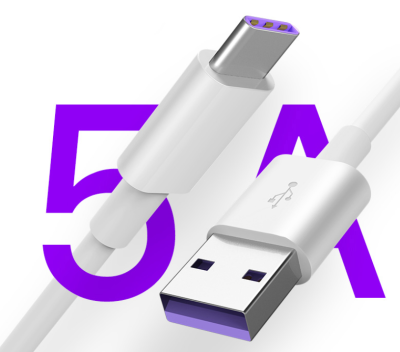USB C to A cables have become essential for modern devices due to their versatility, performance, and wide compatibility. Here are the key reasons why these cables are indispensable:
1. Universal Compatibility
- Bridging Generations: USB C to A cables allow new devices with USB C ports to connect to older devices and accessories that use USB A, ensuring seamless integration across different generations of technology.
- Wide Range of Devices: These cables can be used with smartphones, tablets, laptops, external hard drives, printers, and various other peripherals, making them highly versatile.
2. Enhanced Data Transfer Speeds
- High-Speed Transfers: Many USB C to A cables support USB 3.0 and USB 3.1 standards, offering data transfer speeds of up to 5 Gbps and 10 Gbps, respectively. This is significantly faster than older USB 2.0 cables, making file transfers quick and efficient.
3. Improved Charging Capabilities
- Power Delivery: USB C to A cables often support higher power delivery, enabling fast charging for devices. This is particularly useful for quickly charging smartphones, tablets, and even some laptops.
- Versatile Charging: They can charge a wide range of devices, from low-power accessories to high-power devices, making them a universal charging solution.
4. Reversible Connector
- Ease of Use: The USB C connector is reversible, which means you can plug it in either way. This eliminates the frustration of trying to connect the cable in the correct orientation, simplifying everyday use.
5. Future-Proofing
- Adoption of USB C: As USB C becomes the standard for many new devices, having USB C to A cables ensures compatibility with future devices. This future-proofs your accessories and reduces the need for frequent cable replacements.
6. Durability and Build Quality
- Robust Construction: Many USB C to A cables are designed with high-quality materials, including braided exteriors and reinforced connectors, which enhance their durability and longevity.
- Reduced Wear and Tear: High-quality build reduces the risk of fraying and damage, ensuring reliable performance over time.
7. Multi-Functionality
- Support for Various Protocols: Some USB C to A cables support additional protocols such as DisplayPort and HDMI, allowing them to be used for video output and other functions, increasing their utility.
- Universal Use: These cables can be used for data transfer, charging, and connecting various peripherals, making them an all-in-one solution.
8. Cost-Effective
- Affordability: Investing in USB C to A cables is a cost-effective way to extend the usability of older peripherals with new devices, avoiding the need for multiple new accessories.
9. Safety and Standards
- Certified Cables: Many USB C to A cables are USB-IF certified, ensuring they meet industry standards for safety and performance. This reduces the risk of damage to your devices from substandard cables.
10. Convenience and Efficiency
- Streamlined Setup: Using USB C to A cables helps streamline your tech setup by reducing the number of different types of cables you need. This makes it easier to manage connections and keep your workspace organized.
Conclusion
USB C to A cables are essential for modern devices due to their compatibility, speed, charging capabilities, and future-proofing. They offer a versatile, durable, and cost-effective solution for connecting and powering a wide range of devices, making them a crucial component of any tech setup








